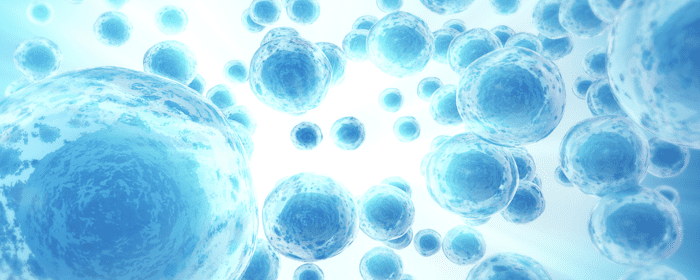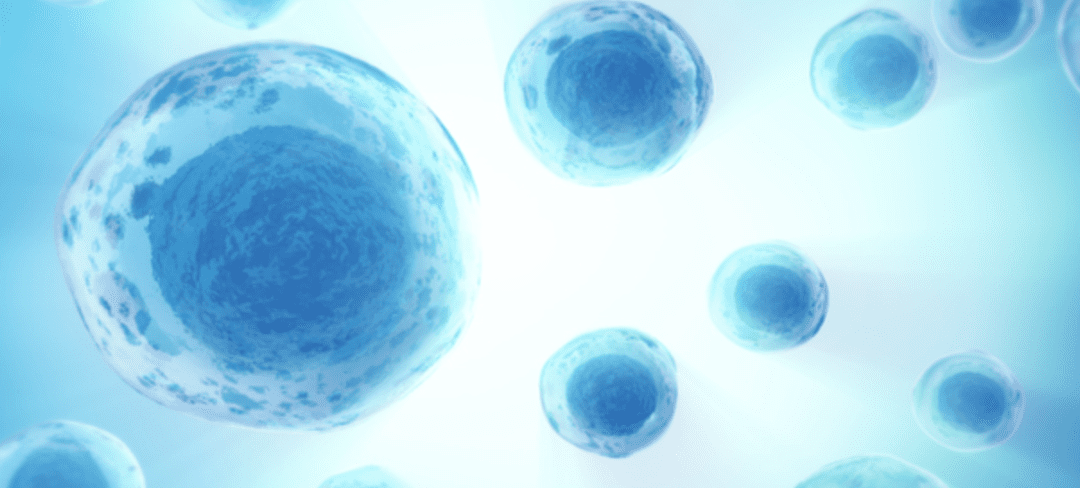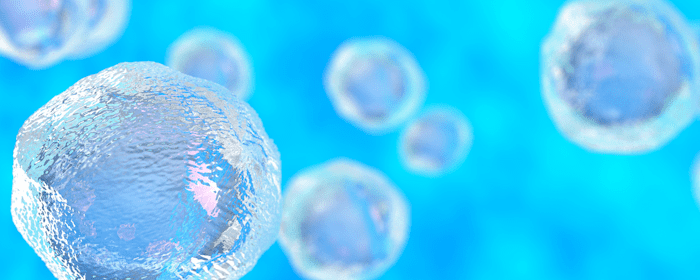
by Stemedix | May 22, 2023 | Multiple Sclerosis, Stem Cell Therapy
When it comes to chronic illnesses, it is very important to understand the nuances and distinctions between different conditions. There are two commonly misunderstood conditions: fibromyalgia and multiple sclerosis (MS).
Although both conditions can cause significant pain and affect a person’s quality of life, they are distinct in their origins, symptoms, and treatment approaches. By exploring the differences between fibromyalgia and multiple sclerosis, we hope to provide clarity and dispel misconceptions.
What Are the Differences?
Fibromyalgia: A Widespread Pain Disorder
Fibromyalgia is a chronic disorder characterized by widespread musculoskeletal pain, fatigue, sleep disturbances, and cognitive difficulties. It affects approximately 10 million people in the United States alone, predominantly women. Unlike MS, fibromyalgia is not an autoimmune disorder caused by physical injury. The exact cause of fibromyalgia is unknown, and there is currently no cure for the condition.
Symptoms and Diagnosis of Fibromyalgia:
The primary symptom of fibromyalgia is chronic pain that is widespread throughout the body, often accompanied by tenderness in specific tender points. Fatigue and sleep disturbances are also prevalent, with individuals experiencing disrupted sleep patterns and waking up feeling unrefreshed. Cognitive difficulties, commonly known as “fibro fog,” can include problems with memory, concentration, and overall mental clarity.
Diagnosing fibromyalgia can be challenging as there are no specific laboratory tests or imaging studies available to confirm the condition. Instead, doctors rely on a combination of clinical symptoms, a thorough medical history, and physical examination to make an accurate diagnosis. The American College of Rheumatology has established criteria, including widespread pain for at least three months and the presence of tender points, to aid in the diagnosis of fibromyalgia.
Multiple Sclerosis: A Complex Autoimmune Disease
Multiple sclerosis (MS), on the other hand, is a chronic autoimmune disease that affects the central nervous system (CNS). It occurs when the immune system mistakenly attacks the protective covering of nerve fibers, disrupting the communication between the brain and the rest of the body. Unlike fibromyalgia, MS is considered an autoimmune disorder, and its exact cause remains unknown.
Symptoms and Diagnosis of Multiple Sclerosis:
MS can manifest in a variety of symptoms that vary widely among individuals. Common symptoms include fatigue, difficulty walking, numbness or tingling in the limbs, muscle weakness, coordination problems, blurred vision, and cognitive impairment. The severity and progression of symptoms can also differ from person to person.
Diagnosing MS is a complex process that often involves multiple tests and evaluations. Doctors may use magnetic resonance imaging (MRI) scans to detect characteristic lesions in the CNS, perform a lumbar puncture to analyze cerebrospinal fluid, and consider the patient’s medical history and clinical presentation. Collaboration between neurologists and other specialists is crucial to making an accurate diagnosis.
What Are the Treatment Approaches?
Since fibromyalgia and multiple sclerosis have distinct underlying causes, their treatment approaches differ significantly. In fibromyalgia management, a multimodal approach is typically recommended. This may include a combination of medications, such as analgesics, antidepressants, and anticonvulsants, along with lifestyle modifications like exercise, stress reduction techniques, and cognitive-behavioral therapy (CBT).
For multiple sclerosis, the focus is on managing symptoms, slowing disease progression, and reducing relapses. Disease-modifying therapies (DMTs) are commonly prescribed to modify the immune response and reduce inflammation in MS. Other treatment options include symptomatic medications for specific symptoms, physical therapy, occupational therapy, and speech therapy to manage any functional impairments.
Regenerative Medicine for Fibromyalgia and Multiple Sclerosis
Regenerative medicine is a field of medicine that focuses on developing and using techniques to repair, replace, or regenerate damaged or diseased cells, tissues, or organs. It involves the use of various biological materials, such as stem cells, growth factors, and tissue engineering, to restore normal function in the body.
Mesenchymal stem cell (MSC) therapy is a specific approach within regenerative medicine that utilizes mesenchymal stem cells, which are a type of adult stem cell. These cells are found in various tissues, such as bone marrow, adipose tissue (fat), and umbilical cord tissue.
MSCs have the ability to differentiate into different cell types, including bone cells, cartilage cells, muscle cells, and fat cells. They also possess anti-inflammatory and immunomodulatory properties, making them particularly promising for therapeutic use.
The therapeutic potential of MSCs lies in their ability to promote tissue repair and regeneration through several mechanisms. These include the secretion of bioactive molecules that stimulate the growth of new blood vessels (angiogenesis), modulation of the immune response, promotion of cell survival, and differentiation into specific cell types.
Stem cell therapy has similar helpful mechanisms for both fibromyalgia and multiple sclerosis, but what are the specific details to each?
How Can Stem Cell Therapy Help Fibromyalgia?
Anti-inflammatory effects: Stem cells have the potential to reduce inflammation in the body, which could help alleviate the symptoms of fibromyalgia. They release a range of anti-inflammatory molecules that can dampen the immune response. These include cytokines such as interleukin-10 (IL-10), which is known for its potent anti-inflammatory properties. IL-10 can inhibit the production of pro-inflammatory cytokines, reduce the activation of immune cells, and promote the generation of regulatory immune cells.
Tissue regeneration: Stem cells can differentiate into various cell types, and they have the ability to regenerate damaged tissues or promote the repair of affected areas by secreting a variety of growth factors, cytokines, and other bioactive molecules that support tissue repair.
Modulation of the immune system: Stem cells help to regulate the immune response, potentially impacting the immune dysfunction often observed in fibromyalgia patients. By reducing inflammation and modulating the immune system, MSCs create a more favorable environment for tissue repair processes to occur.
How Can Stem Cell Therapy Help Multiple Sclerosis?
Immunomodulation: Stem cells have immunomodulatory properties, meaning they can regulate and modify the immune response to potentially help reduce the inflammation and damage associated with MS. They can suppress excessive immune system activity, including the inflammatory response directed against the myelin sheath.
Anti-inflammatory effects: Stem cells have been shown to release anti-inflammatory molecules and factors and can dampen the inflammatory response and promote an environment that is less damaging to the central nervous system (CNS).
Promotion of tissue repair and regeneration: Stem cells have the ability to differentiate into various cell types, including neuronal and glial cells and may contribute to the repair and regeneration of damaged tissue. Additionally, MSCs can produce growth factors and other molecules that support the survival and growth of existing neurons and oligodendrocytes.
Modulation of autoimmune response: In MS, the immune system mistakenly attacks the myelin sheath, leading to nerve damage. MSCs may help modulate the autoimmune response by suppressing autoreactive immune cells and promoting the development of regulatory T cells (Tregs). Tregs play a crucial role in maintaining immune tolerance and preventing excessive immune reactions.
Neuroprotection: MSCs may exert neuroprotective effects by reducing oxidative stress, promoting the production of neurotrophic factors (such as nerve growth factor and brain-derived neurotrophic factor), and inhibiting cell death pathways. These actions can help protect neurons and prevent further damage to the CNS.
Those who may have symptoms of either fibromyalgia or multiple sclerosis should see their primary specialist to have appropriate diagnostic testing completed. This will best determine what therapeutic options they have to manage their condition and promote a healthier quality of life. If you would like to learn more about treatment options for either MS or Fibromyalgia, contact us at Stemedix today!

by admin | May 17, 2023 | Stem Cell Therapy, Kidney Disease, Mesenchymal Stem Cells, Stem Cell Research
Ischemic kidney diseases are serious health issues that lead to irreversible loss of kidney function and are commonly associated with high rates of mortality and morbidity. Many of the conditions captured under the term ischemic kidney disease occur as a result of decreased glomerular filtration rate (GFR) caused by vasoconstriction or loss of autoregulation. Ischemic kidney disease, or ischemic renal disease, is a contributing factor anywhere between 6% – 27% of end-stage kidney disease and is most common among patients 50 years old or older.
The progression of these types of kidney diseases is often multifaceted and involves complex hormonal-immunological cellular interactions. Since ischemic kidney disease often involves damage that occurs to many different types of cells, the conditions have often been demonstrated to be resistant to conventional therapy.
Considering mesenchymal stem cells (MSCs) provide renal protection, their anti-inflammatory and immunomodulatory properties are of interest in an effort to better understand how they can be therapeutically used to treat and prevent acute kidney ischemia (AKI).
In this review, Zhu et al. examine recent progress in the use of MSC to prevent kidney diseases, with a specific focus on chronic ischemic kidney disease (CIKD).
When used to treat CIKD, MSCs have been found to achieve renal cellular repair in a number of different ways. Initially, and upon infusion, MSCs home to the injury site and release homing receptors, growth factors, and anti-inflammatory cytokines to the injury site. They also release similar microparticles that promote kidney repair through internalization in other cells, allowing for reduced intrarenal inflammation and the promotion of vascular regeneration.
Examining the results of clinical trials exploring the use of MSC to treat CIKD, and considering patients with diabetes mellitus often develop chronic kidney issues, including diabetic nephropathy (DN), the authors believe the beneficial application of the anti-inflammatory, antioxidant, and immunomodulating features of MSC could help in the treatment of DN.
While Zhu et al. highlights the potential of MSCs in the treatment of CIKD in this review, they also identify potential limitations, including the potential for MSCs to form teratoma or other tumors (to date, no direct evidence of kidney tumor formation has been reported) and exactly how long the effects of MSC on kidney protection will last. As a way to address both potential limitations, the authors recommend longer follow-up times to ensure all potential detrimental effects of MSC use in humans are known and accounted for.
The review concludes that while further studies are needed to discern the chief elements of their actions and to define the optimal type (tissue source, preconditioning), dose, and delivery route, MSCs demonstrate remarkable potential for future treatment of ischemic kidney disease.
Source: “Concise Review: Mesenchymal Stem Cell Treatment for Ischemic ….” https://www.ncbi.nlm.nih.gov/pmc/articles/PMC3795813/.

by admin | May 10, 2023 | Stem Cell Therapy, Mesenchymal Stem Cells, Multiple Sclerosis, Stem Cell Research
Multiple sclerosis (MS) is a progressive disease of the central nervous system (CNS) that occurs as a result of the body’s immune system attacking the protective sheath, or myelin, responsible for covering nerve fibers. Characterized by progressive nerve deterioration and damage of the nerve fibers, MS is currently estimated to affect nearly 600,000 adults in the United States.
While a specific cause of MS has not yet been determined, recent findings have suggested interactions between environmental and genetic factors as contributors to the susceptibility to MS.
Current pharmaceutical treatments for MS have demonstrated the ability to slow symptoms associated with MS but have not demonstrated the ability to treat or prevent the disease itself.
Recent studies have identified mesenchymal stem cells (MSCs) as having anti-inflammatory properties that could potentially be an effective therapy option for preventing or managing overactivity and self-antigen attacks by T cells and macrophages that are commonly associated with MS.
As part of this review, Alanazi et al. examined the most relevant clinical trials that utilized MSCs from a variety of sources as part of their investigation into the effectiveness of these stem cells as a potential therapy for MS.
MSCs are able to be easily isolated from multiple sources of the human body, including bone marrow, adipose tissue, umbilical cord, and the placenta. These stem cells have also demonstrated the ability to be expanded in culture media and to be safely utilized as autologous treatment without the risk of rejection.
Regardless of their source, MSCs, in general, have been demonstrated to be highly proliferative, capable of self-renewal, and have immunomodulatory and neurodegenerative effects. In addition, MSCs demonstrate the ability to differentiate and secrete anti-inflammatory factors that allow them to control the progress of autoimmune diseases, including MS.
After examining numerous clinical trials utilizing MSCs from a range of sources, the authors conclude that MSCs – regardless of their source – will all work on inhibiting CD4+ and CD8+ T cell activation, T regulatory cells (Tregs), and macrophage switch into the auto-immune phenotype.
While there are many good sources of MSCs, Alanazi et al. also conclude that previously conducted clinical trials demonstrate umbilical cord MSCs (UCMSCs) to be the best option for the management of Multiple Sclerosis for several reasons. These reasons include faster self-renewal than other MSCs, the ability to differentiate into three germ layers, and the observed ability to accumulate in damaged tissue or inflamed areas.
Additionally, and besides being one of the few MSC sources without ethical concerns, UCMSCs offer benefits from a practical standpoint The separation of MSCs from the umbilical cord is easy and painless, the number of cells collected per unit is high, UCMSC transfusion is not expensive, and UCMSCs have been shown to be very safe to use in this application.
Considering the information presented in this review, Alanazi et al. recommend the clinical use of UCMSCs for regenerative medicine and immunotherapy.
Source: “Mesenchymal stem cell therapy: A review of clinical trials for multiple ….” 23 Aug. 2022, https://pubmed.ncbi.nlm.nih.gov/36092509/.

by Stemedix | May 8, 2023 | Stem Cell Therapy, Regenerative Medicine
Stem cell therapy is a type of regenerative medicine that involves using stem cells to promote the repair, regeneration, or replacement of damaged or diseased cells, tissues, or organs in the body. Stem cells are undifferentiated cells that have the ability to develop into many different types of cells, such as muscle, bone, or cartilage cells, depending on the signals they receive in the body. In this article, we will discuss everything stem cell therapy including, the Stem Cell Therapy cost in 2023!
Mesenchymal stem cells (MSCs) are a type of adult stem cell that can be found in various tissues in the body, including bone marrow, adipose tissue (fat), and umbilical cord tissue. These cells have the ability to differentiate into many different types of cells, including bone, cartilage, muscle, and fat cells.
In addition to their differentiation potential, MSCs have been found to possess immunomodulatory and anti-inflammatory properties, which make them an attractive candidate for use in regenerative medicine and cell-based therapies.
Stem cell therapy has shown promise in treating a wide range of conditions, including degenerative diseases such as Parkinson’s and Alzheimer’s, autoimmune disorders such as multiple sclerosis and rheumatoid arthritis, and various types of injuries and tissue damage. The therapy works by promoting the body’s natural healing processes and replacing or repairing damaged cells, tissues, or organs with new, healthy cells.
Why Do Patients Explore the Option of Stem Cell Therapy?
Patients may explore stem cell therapy for a variety of reasons, depending on their individual circumstances and medical needs. Here are some of the common reasons why patients may explore stem cell therapy:
- Treatment of chronic conditions: Stem cell therapy may hold promise for treating a wide range of chronic conditions, including neurodegenerative conditions such as Parkinson’s and Alzheimer’s, autoimmune disorders such as multiple sclerosis and rheumatoid arthritis, and various types of injuries and tissue damage.
- Pain relief: Stem cell therapy may help to alleviate pain associated with conditions such as arthritis, back pain, and joint pain. By promoting tissue regeneration and repair, stem cell therapy can help to reduce inflammation and improve mobility.
- Avoidance of surgery: For some patients, stem cell therapy may offer an alternative to surgery for conditions such as joint injuries or degenerative conditions. Stem cell therapy may be less invasive and have a shorter recovery time than surgical interventions.
- Improvement in quality of life: Patients who are experiencing limitations in their mobility or other activities of daily living due to chronic conditions may explore stem cell therapy as a way to improve their quality of life and overall well-being.
It’s important to note that while stem cell therapy holds promise, it’s important to consult with a qualified healthcare provider to discuss the potential benefits, risks, and limitations of stem cell therapy for your specific condition.
How Much Does Stem Cell Therapy Cost?
Patients seeking relief from their conditions are exploring what regenerative medicine, also known as stem cell therapy, may offer but also how much these therapies are. It is important to be sure you are receiving a quality option for the health investment.
Most insurances will not cover treatments deemed alternative, including regenerative medicine, so these therapies are considered out of pocket. Stem cell therapy in the United States varies depending on the clinic, the location, and the physician performing the procedure. Since the treatment types and requirements vary widely, the cost can, too.
On average, adult Stem Cell therapy cost in 2023 in the U.S. range from $5,000 to $15,000.
Some clinics will offer financing options and others may also include travel accommodations for those having to travel.
How Do You Find a Quality Provider for Stem Cell Therapy?
When it comes to stem cell treatment, it’s important to ensure that you’re receiving quality care to maximize the potential benefits and minimize the risks. Here are some things to look for to ensure you’re getting quality stem cell treatment:
Credentials of the provider: Make sure that the provider administering the stem cell therapy is licensed and certified in their respective field. You can verify this by checking their credentials with the appropriate regulatory body.
Treatment protocols: The clinic should have established protocols for administering stem cell therapy that comply with industry standards and regulations. They should be able to provide you with detailed information on the treatment process, including the source and type of stem cells used.
Clinical experience: Choose a clinic with a track record of success and experience in administering stem cell therapy. You can ask for patient testimonials or case studies to verify their claims.
Safety measures: Stem cell therapy should be conducted in a sterile and safe environment to minimize the risk of infection or other complications. The clinic should follow strict safety protocols, including the use of sterile equipment and a clean treatment area.
Follow-up process: Quality stem cell therapy should include ongoing care and follow-up to monitor your progress and ensure that you’re getting the most benefit from the treatment. The clinic should have a follow-up plan in place to track your progress and make any necessary adjustments to the treatment plan.
It’s important to do your research and ask questions before committing to stem cell therapy. You can also consult with your healthcare provider to get their input and recommendations. Some patients are exploring options of stem cell therapies internationally. Traveling internationally for the treatment will include costs of flights, hotels, and overall travel expenses on top of the cost of treatment. But patients should consider differences in regulations, quality control, and medical practices. For example:
- Lack of regulatory oversight: Different countries may have varying regulations for stem cell therapy, and some may have less strict oversight than others. This can make it difficult for patients to know if the treatments they receive overseas are safe and effective.
- Quality control issues: Stem cell therapies may vary in quality depending on the facility where they are administered, the source of the cells, and the methods used to prepare and administer the cells. Overseas facilities may not have the same quality control standards as those in the patient’s home country.
- Safety concerns: Stem cell therapies carry the risk of infection, immune reactions, and other complications, particularly if the cells are not prepared or administered correctly. Patients who receive stem cell therapy overseas may be at greater risk of complications if the facility is not properly equipped to manage potential adverse events.
- Difficulty accessing follow-up care: Patients who receive stem cell therapy overseas may have difficulty accessing follow-up care or medical attention if complications arise after they return home.
The Stem Cell Therapy cost in 2023 may be expensive, but well-informed patients who undergo the treatment often find the benefits prove to be worth their investment, especially in cases where they no longer require ongoing prescriptions and pain medications. Talk to a qualifying provider to see if this alternative medicine may provide you with the opportunity for a better quality of life you are seeking.

by admin | May 3, 2023 | Stem Cell Therapy, COPD, Mesenchymal Stem Cells, Stem Cell Research, Umbilical Stem Cell
Chronic obstructive pulmonary disease (COPD) is an incurable and debilitating disease characterized by chronic and progressive inflammation that leads to small airway obstruction and emphysema.
According to the World Health Organization, COPD is the third leading cause of death and is responsible for an estimated 3.2 million deaths each year. Between 80 and 90% of all COPD cases are caused by exposure to cigarette smoke, meaning it is also one of the most preventable diseases.
In addition to the increased risk of death, COPD significantly affects the overall quality of life and is often associated with difficulty breathing, chronic cough, lack of energy, lung infections, lung cancer, and heart disease.
A number of stem-cell-based approaches to address this issue are currently being explored. In this study, Ridzuan et al. uses an animal model to assess the potential anti-inflammatory effects of human umbilical cord mesenchymal stem cell (hUC-MSC)-derived extracellular vesicles (EVs) in cases of COPD.
EVs are small membrane vesicles of multivesicular bodies that are released by a variety of cells, including MSCs. Studies have demonstrated EVs isolated from MSCs mimic the therapeutic effects of MSCs.
Over the course of this study, and to mimic the symptoms observed with COPD, rats were exposed to cigarette smoke for up to 12 weeks, followed by transplantation of hUC-MSCs or application of hUC-MSC-derived EVs.
At the conclusion of this study, Ridzuan et al. found that both the transplantation of hUC-MSCs and the application of hUC-MSC-derived EVs reduced peribronchial and perivascular inflammation, slowed alveolar septal thickening, and decreased the number of goblet cells. Both applications also improved the loss of alveolar septa in the lung of COPD rats and regulated multiple pathways commonly associated with COPD.
Ridzuan et al. conclude that hUC-MSC-derived EVs effectively reduce COPD-induced inflammation and could have the potential to be a therapy for the management of COPD.
The authors also concluded that the selected treatment methods decreased the above-described symptoms at comparable rates. While there are still limited data demonstrating the regenerative and the anti-inflammatory effects of MSC-EVs to mitigate the inflammation in COPD, further study is needed to fully understand the anti-inflammatory effects of MSC-EVs and to better understand the specific mechanisms of action of all contents of MSC-EVs as they relate to the potential future treatment of COPD.
Source: “Human umbilical cord mesenchymal stem cell-derived extracellular ….” 12 Jan. 2021, https://stemcellres.biomedcentral.com/articles/10.1186/s13287-020-02088-6.






 St. Petersburg, Florida
St. Petersburg, Florida
